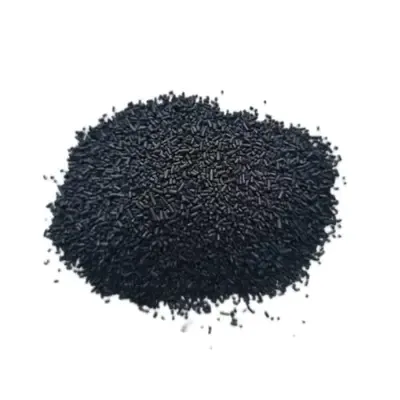
Activated carbon is a material with a highly porous structure and a large specific surface area, which has excellent adsorption capacity and chemical reactivity. Before understanding how activated carbon works, it is first necessary to understand the concepts of adsorption and surface properties.

Adsorption is the process by which a gas, liquid or dissolved substance is adsorbed from a medium (eg water, air) onto a solid surface. The porous structure of activated carbon gives it a larger surface area, providing a huge contact area for adsorbing substances.
The working principle of activated charcoal can be boiled down to the following aspects:
1. Physical adsorption: Activated carbon adsorbs molecules on its surface through physical adsorption. This is due to the extremely high specific surface area and the large number of micropores and mesoporous structures of activated carbon. When gas molecules or dissolved substances touch the surface of activated carbon, they will be adsorbed in the pores of activated carbon due to the attractive force and force existing on the surface of the adsorbent.
2. Chemical adsorption: In addition to physical adsorption, activated carbon can also capture molecules by chemical adsorption. This is due to the fact that some chemical functional groups (such as hydroxyl, carboxyl, etc.) on the surface of activated carbon can chemically react with specific types of molecules. This chemical adsorption can enhance the adsorption capacity of activated carbon for certain organic substances.
3. Surface characteristics: The surface of activated carbon has certain charge characteristics. These surface charges can electrostatically interact with ions or charged molecules in solution. Depending on the chemical properties and physical structure of the activated carbon surface, substances with specific electrical properties can be selectively adsorbed or excluded.
Different types of activated carbon can be tailored for different types of pollutants. For example, some activated carbons are better at adsorbing volatile organic compounds (VOCs) or odorous substances, while others have a higher selective adsorption capacity for substances such as heavy metal ions or pesticide residues.
The performance of activated carbon is closely related to its physical and chemical properties and application conditions. Factors affecting the adsorption performance of activated carbon include pore size distribution, specific surface area, pore volume, etc. In addition, the adsorption capacity and efficiency of activated carbon are also affected by factors such as temperature, humidity, solute concentration, and contact time.
All in all, activated carbon can adsorb gases, liquids or dissolved substances onto its surface through the mechanisms of physical adsorption and chemical adsorption through its porous structure and huge specific surface area. The process relies on the interaction forces between substances and the properties of activated carbon surfaces. The working principle of activated carbon is that its unique structure and properties make it an effective adsorbent widely used in water treatment, air purification and other environmental applications.